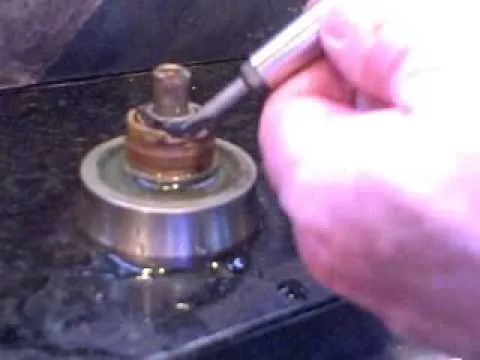

A leaky bathroom faucet underneath can be a frustrating and costly issue. This guide dives deep into the world of diagnosing and repairing this common plumbing problem. We’ll explore the causes, troubleshooting techniques, and practical steps to solve your leaky faucet, ensuring a water-tight and functional bathroom faucet. This article will cover everything from identifying the source of the leak to performing the necessary repairs. We’ll also address common issues, like a dripping or leaking faucet, and provide actionable solutions for homeowners. Let’s get started!
Understanding the Causes of a Leaking Faucet Underneath
Leaking faucets, especially those dripping or leaking underneath, can stem from various causes. Water damage is a serious concern, so prompt action is important. A leaky faucet underneath often indicates a problem with the faucet’s internal parts or a connection issue. Understanding the root cause is the first step in effectively repairing the leak. Ignoring a leak under the sink can lead to more significant damage to your bathroom or your home. Ignoring the drip will cost you money in repairs and damage.
Common Causes
- Loose or Damaged Washer: Worn-out or loose washers in the faucet cartridge are a common culprit. The washer’s job is to seal the valve and prevent water from escaping. If the washer is damaged or loosened, it may no longer provide a proper seal.
- Damaged O-Rings: O-rings are crucial in sealing the faucet’s various components. Damage or wear to these seals can lead to leaks under the faucet base.
- Faulty Cartridge: A faulty faucet cartridge is another potential cause. The cartridge controls the water flow and can wear out over time, potentially leading to leaks.
- Loose Connections: Loose connections within the faucet’s plumbing system are another possibility. Over time, these connections can loosen, leading to leaks that may not be immediately apparent.
- Clogged Drain: A clogged drain in your sink can sometimes cause the faucet to leak water or drip underneath.
Diagnosing the Leak: Pinpointing the Source
Accurate leak detection is essential for successful repairs. Identifying the precise location of the leak is crucial. By determining the specific problem, the necessary repair or replacement can be targeted efficiently. This process requires careful observation and attention to detail, avoiding costly trial-and-error approaches.
Visual Inspection
- First, inspect the area around the faucet for any visible water stains or moisture. Look for drips or dampness near the base of the faucet.
- Check for any signs of water dripping or pooling under the sink or on the floor.
- Examine the faucet closely, paying attention to any visible signs of damage or wear.
Utilizing Leak Detection Tools
- A leak detection dye kit can be used to trace the water flow to the leak source.
- Listen for unusual sounds around the pipes, especially around the faucet base, that might indicate a leak.
DIY Repair Options for a Leaking Faucet
Homeowners often want to tackle DIY repairs. However, certain situations may necessitate professional help. This section covers common DIY solutions for a leaking faucet, but always prioritize your safety.
Replacing Faucet Washers
- Replacing worn washers is a relatively easy DIY job. Gather the necessary tools and parts and follow the step-by-step process. Consult the faucet manufacturer’s instructions if needed.
Fixing O-Rings
- Replacing damaged O-rings might require more specialized knowledge and tools. Seek advice from experienced individuals or videos for guidance. Proper replacement ensures a reliable seal.
Replacing the Faucet Cartridge
- Replacing a faucet cartridge can be challenging for beginners. It requires careful handling and the right tools, such as a screwdriver, adjustable wrench, and new cartridges. Following manufacturer instructions is crucial.
Tightening Connections
- Tightening loose connections can often solve the problem. Be cautious not to overtighten, as this could damage the pipes.
Seeking Professional Help
- If the leak is severe, persists, or you lack the necessary skills and confidence, it is best to contact a professional plumber. They have the experience to identify and solve the underlying issue.
Preventing Future Leaks
Regular maintenance is key to avoiding future plumbing problems. By incorporating proactive steps, homeowners can mitigate the risk of future faucet issues.
Routine Inspections
- Regularly inspect your bathroom faucet for any signs of dripping or leaks, particularly near the base. Proactive measures can prevent larger problems.
Proper Maintenance Practices
- Make it a habit to check the faucet and its connections periodically. Proper maintenance can significantly extend the lifespan of your faucet.
Water Pressure Checks
- Ensure the water pressure in your home is within acceptable limits. Excessive water pressure can put additional strain on the faucet’s components, leading to potential leaks.
Identifying Potential Complications
There are specific situations to watch out for when dealing with a leaking faucet. Identifying possible complications will assist in achieving the most effective solution.
Hard Water Issues
- Hard water can contribute to mineral deposits on faucet components, increasing the risk of leaks over time.
Unusual Sound or Odor
- Listen for unusual sounds or odors near the faucet, as these could indicate a larger problem behind the leak.
Faulty Installation
- If the faucet was recently installed or if you are not sure of the previous work, contact a professional plumber to prevent further issues.
In conclusion, fixing a leaking bathroom faucet underneath requires a systematic approach. Understanding the cause, identifying the specific leak point, and selecting the appropriate repair method are crucial steps. By following these steps and using the right tools, you can effectively solve your leaking faucet problem and prevent further damage to your plumbing system. Don’t hesitate to contact a professional plumber if the problem persists or you lack the necessary skills and tools. They can offer expert advice and ensure a long-lasting solution for your leaky bathroom faucet.